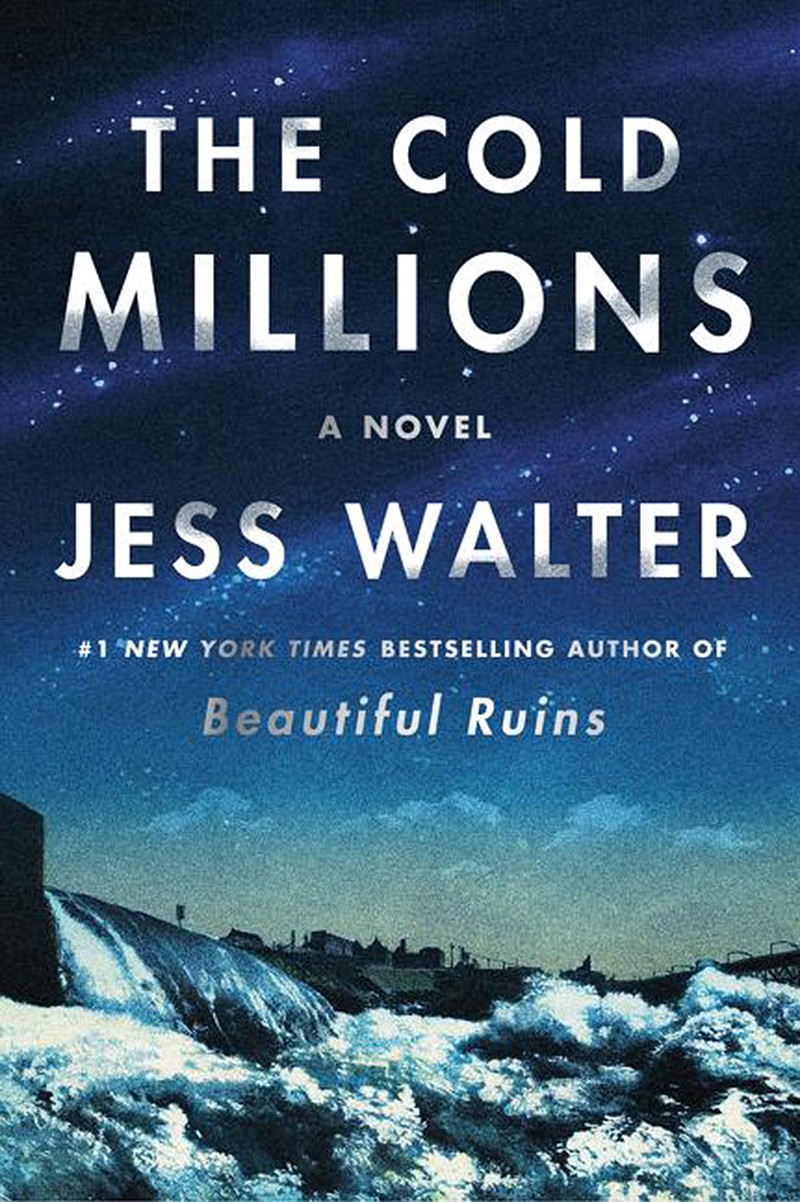Reading Jess Walter's new novel, "The Cold Millions," might be the most fun I've ever had with a history lesson.
Set in wild Washington state a century ago, it fairly bursts with energy, adventure, humor, pathos and irresistible characters. Packed into its bravura storytelling is a close-up look at some of the most dangerous days of the labor movement in the United States and at some of the real people who drove it.
"The Cold Millions" is the seventh novel from Walter. His 2006 novel, "The Zero," was a finalist for the National Book Award; his 2012 book, "Beautiful Ruins," a New York Times No. 1 bestseller. He's also a journalist whose work has appeared in the Washington Post, New York Times and other publications.
Like several of his other books, "The Cold Millions" is historical fiction, mixing real people and events with imagined ones. It's also a tribute to Walter's hometown, Spokane, set there in 1909 amid the city's exuberant and sometimes violent growth around the turn of the 19th century.
"It was a boomtown that just kept booming," Walter writes, "doubling in size every six years, going from a few hundred to a hundred-some thousand in just thirty years. Spokane felt like the intersection of Frontier and Civilized, the final gasp of a thing before it turned into something else ? the Last Rush Town, Gig called it."
Gig would be Gregory Dolan, one of the countless men and women who crisscrossed the country in search of work. Called floaters and hoboes and many less pleasant names, many of them are immigrants or, like Gig, children of immigrants, at a time when anti-immigrant bigotry is in ugly bloom.
This army of workers is always on the hunt for jobs on farms in harvest season, in mines and bars and brothels in rush towns where gold or silver is discovered, on work gangs building roads and rail tracks, in lumber camps and anyplace else where the labor is hard, the paychecks small and the situation temporary.
At 23, Gig enjoys this life. He decamped from the bitter family home in Montana as a teenager and loves his freedom. He has lately, though, acquired a responsibility: his only surviving family member, baby brother Ryan. "Rye the last, all of eight years old when his da dropped dead on the steps of a tavern, the very definition of Irish hell: dying walking into a bar."
Rye is 16 now. He adores his handsome, charming brother and is thrilled to be on the road with him. He's also intrigued by his brother's growing involvement in the labor movement, which in Spokane is focusing on "job sharks," who charge workers like the Dolans a dollar (a day's wage then) to place them in jobs, then get them fired a week or two later so they can bring in new hires and score another buck.
The city's police force meets the workers' speeches and marches with swift brutality. Walter writes a heart-stopping set piece about one of the police riots that ends with both Dolan brothers jailed in appalling conditions. Rye is freed much sooner than Gig, partly because of his age and partly because of an enigmatic entanglement with Lem Brand, one of Spokane's flamboyant millionaires.
"Brand's wealth," Walter writes, "came from silver-mining the Coeur d'Alenes and the rather broad range of vices his workers spent their money on - cathouses, saloons, hotels, opium dens, and theaters in Spokane's tenderloin, positions he held behind a series of paper partners. 'Lem likes to say that every dollar that goes out in payroll,' Ursula said, 'comes back through bed, brothel and booze.' "
Ursula, aka Ursula the Great, is the connection between Brand and the Dolans. She performs a popular and astounding strip-tease act inside a cage with a live cougar, and both Gig and Brand are smitten with her.
Ursula is not what she seems to be, and neither are several of the other characters Rye falls in with in his quest to get Gig out of jail. Some of those are fictional, but a number of them are real people Walter weaves into his story.
The most vivid of these historical figures is Elizabeth Gurley Flynn. Raised in New York by activist progressive parents, she was honing her skills as an orator by the time she was 10. Along with her striking Irish beauty - delicate features, fair skin and a mane of black hair - those skills earned her several nicknames: In progressive newspapers she was "the East Side Joan of Arc," in the New York Times a "she-dog of anarchy," everywhere known as Rebel Girl.
First arrested at age 15, Elizabeth is, by the time Rye meets her, a veteran of union organizing all over the country, married and pregnant and all of 19. She is fiery, fearless and impatient with sexist boundaries. When she arrives in Spokane and a union official wonders whether she should be allowed to speak, she laughs. "Mr. Davis, with all due respect, I have given speeches from Maine to Montana, and I have never once been allowed to speak."
She's in Spokane to help free the hundreds of workers already jailed and to organize a free speech demonstration that will surely end in more arrests. With Gig in a cell, Rye latches on to Elizabeth like a lost pup. It's an attachment that will open his eyes and his mind, put his life in danger several times over and ultimately break his heart.
Rye's complicated journey from boy to man is the main line through "The Cold Millions," but this big-hearted book is populated by an array of memorable characters who bring a slice of American history to vibrant life.

